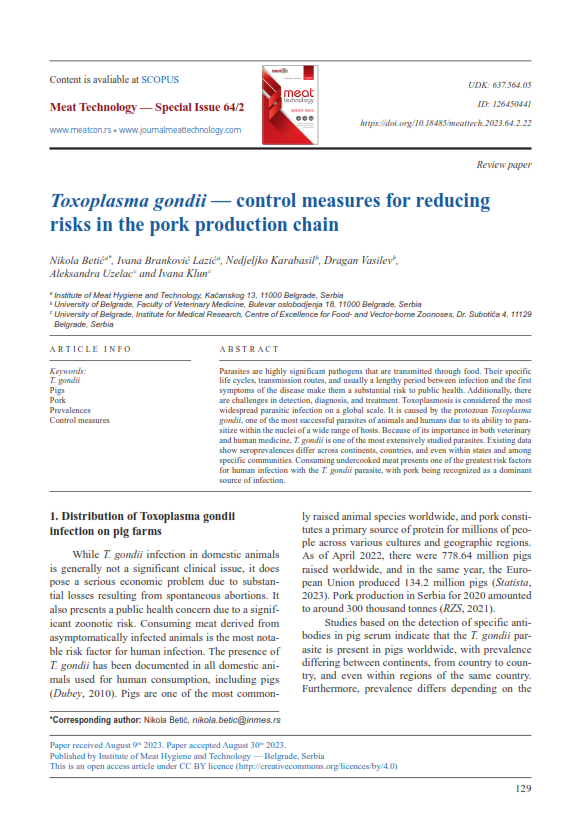Toxoplasma gondii – control measures for reducing risks in the pork production chain
Abstract
Parasites are highly significant pathogens that are transmitted through food. Their specific life cycles, transmission routes, and usually a lengthy period between infection and the first symptoms of the disease make them a substantial risk to public health. Additionally, there are challenges in detection, diagnosis, and treatment. Toxoplasmosis is considered the most widespread parasitic infection on a global scale. It is caused by the protozoan Toxoplasma gondii, one of the most successful parasites of animals and humans due to its ability to parasitize within the nuclei of a wide range of hosts. Because of its importance in both veterinary and human medicine, T. gondii is one of the most extensively studied parasites. Existing data show seroprevalences differ across continents, countries, and even within states and among specific communities. Consuming undercooked meat presents one of the greatest risk factors for human infection with the T. gondii parasite, with pork being recognized as a dominant source of infection.





